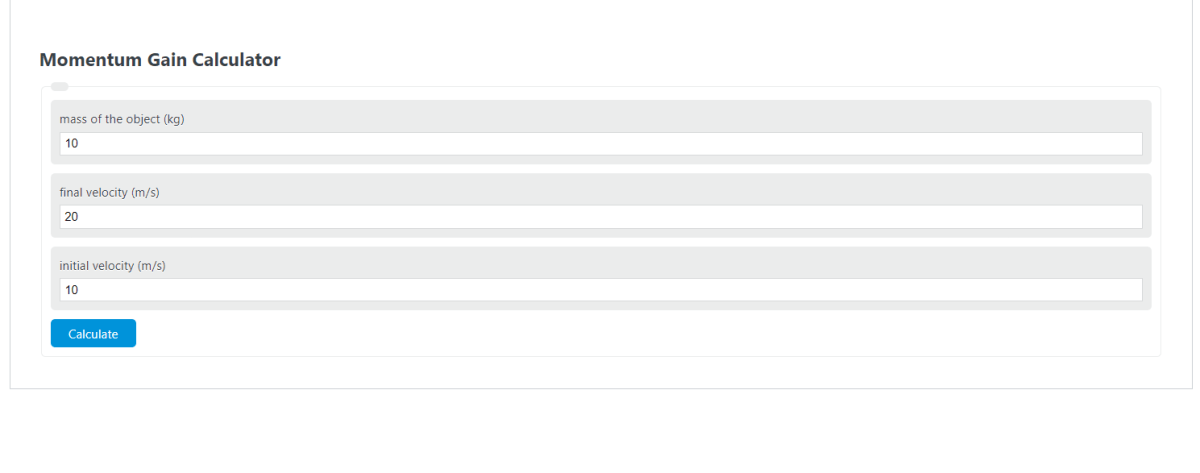Enter the mass of the object, the final velocity, and the initial velocity into the calculator to determine the Momentum Gain.
- All Momentum Calculators
- Change In Momentum Calculator
- Impulse Momentum Calculator
- System Momentum Calculator
- Distance to Momentum Calculator
Momentum Gain Formula
The following equation is used to calculate the Momentum Gain.
pG = m* (FV - IV)
- Where pG is the Momentum Gain (m/s*kg)
- m is the mass of the object (kg)
- FV is the final velocity (m/s)
- IV is the initial velocity (m/s)
To calculate the momentum gain, multiply the mass of the object by the change in velocity.
What are the units for Momentum Gain?
The most common units for Momentum Gain are m/s*kg.
How to Calculate Momentum Gain?
Example Problem:
The following example problem outlines the steps and information needed to calculate the Momentum Gain.
First, determine the mass of the object. In this example, the mass of the object is determined to be 10 (kg).
Next, determine the final velocity. For this problem, the final velocity is measured to be 20 (m/2).
Next, determine the initial velocity. In this case, the initial velocity is found to be 10 (m/s).
Finally, calculate the Momentum Gain using the formula above:
pG = m* (FV – IV)
Inserting the values from above and solving the equation with the imputed values gives:
pG = 10* (20 – 10) =100 (m/s*kg)
FAQ
What is the significance of momentum gain in physics?
Momentum gain is significant in physics as it quantifies the change in an object’s momentum, which is crucial for understanding how forces affect motion. It helps in analyzing collisions, explosions, and other interactions where the velocity of an object changes.
Can momentum gain be negative?
Yes, momentum gain can be negative. This occurs when the final velocity of an object is less than its initial velocity, indicating that the object has slowed down. A negative momentum gain represents a decrease in the object’s momentum.
How does mass affect momentum gain?
The mass of an object directly affects its momentum gain. According to the momentum gain formula, pG = m * (FV – IV), the greater the mass of the object, the larger the momentum gain for a given change in velocity. This means that heavier objects will experience a greater change in momentum than lighter ones for the same change in velocity.
